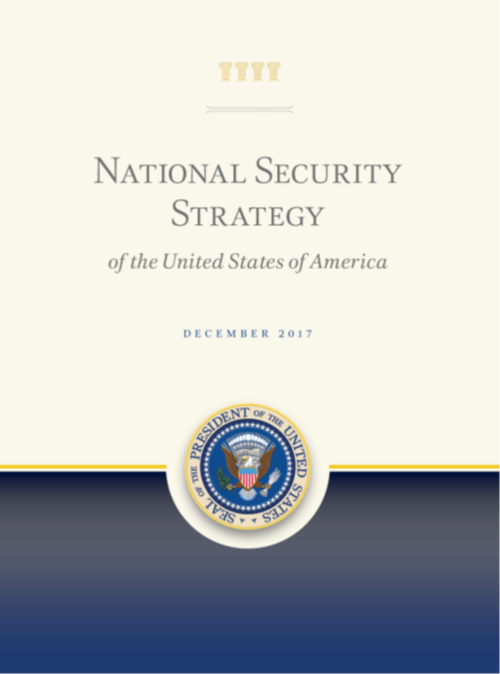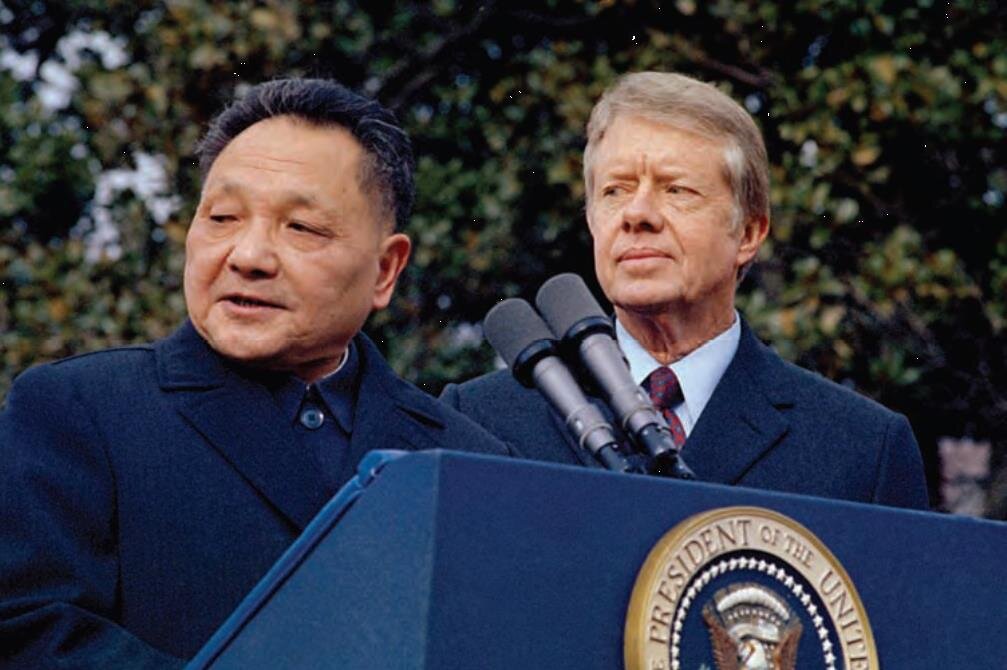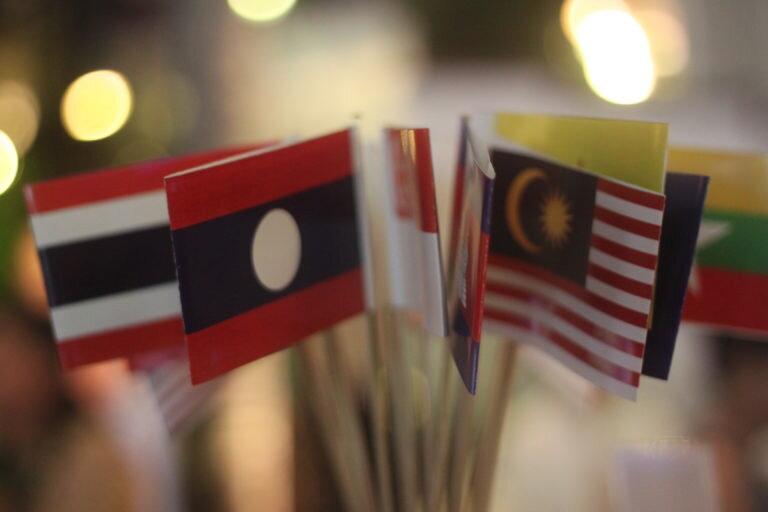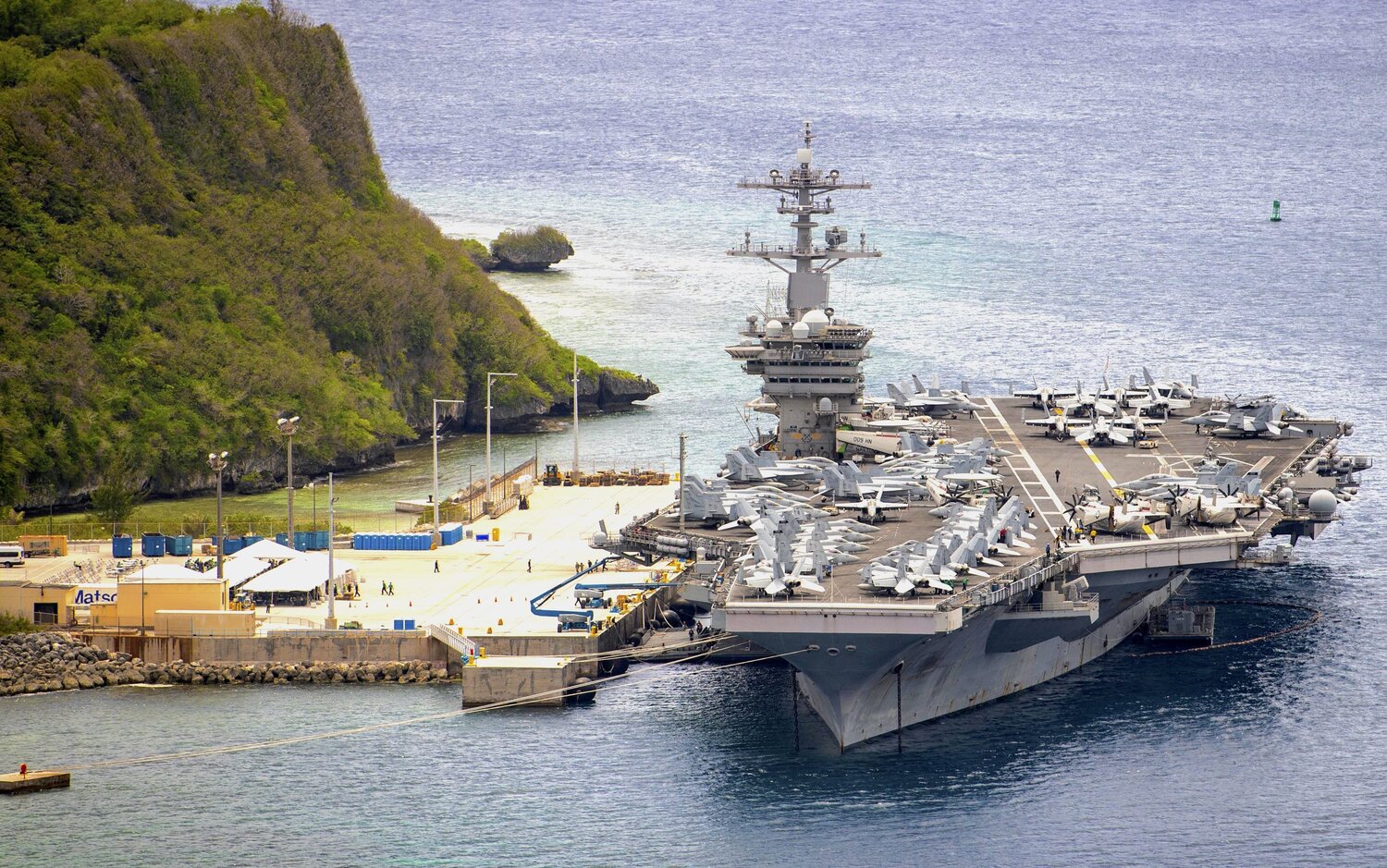By Alexander Boroff and Brigid Calhoun
 Despite the multitude of domestic issues facing the United States as it approaches a presidential election, policymakers must also not lose sight of enduring foreign threats to the nation. Members of both political parties generally agree China constitutes the preeminent national security concern. How should the United States, in a post-COVID world, check Chinese global influence to best protect American national interests?
Despite the multitude of domestic issues facing the United States as it approaches a presidential election, policymakers must also not lose sight of enduring foreign threats to the nation. Members of both political parties generally agree China constitutes the preeminent national security concern. How should the United States, in a post-COVID world, check Chinese global influence to best protect American national interests?
The National Security Strategy is the government’s foundational document that answers this and similar questions on how the administration will confront threats to the nation with a whole-of-government approach. Historically produced at the beginning of each presidential term, a new National Security Strategy will likely be published in the next 18-24 months regardless of the outcome of the pending election. The current National Security Strategy, published in 2017, described the current multi-polar world order as one of Great Power Competition, in which the United States must compete globally rather than dominate from a unipolar position it has held since the Cold War’s end. While the current National Security Strategy contains proven tools to compete with China globally, the international environment has significantly changed since 2017.
This article seeks to enter the ongoing foreign policy debate by examining the history of American government strategy towards China and proposing two new strategic alternatives using diplomatic, information, military, and economic tools of national power. These four categories are not all-inclusive, given that any whole-of-government approach allows the president to leverage a plethora of instruments of national power. However, they form a baseline with which to discuss national strategy. An Indo-Pacific strategy composed of strong regional alliances, free trade agreements, and enhanced military air- and sea-power projection capability will best position the American government to maintain its competitive advantages over China and protect its national interests.
What is Strategy?
To first define terms, a national strategy is “the art of applying power to achieve objectives, within the limits imposed by policy. Strategy connect[s] political purposes with means.”[1] In other words, policy is the means to strategy’s ends. A second definition explains why the 2017 National Security Strategy will require updates. Strategy is a “process requiring constant adaptation to shifting conditions and circumstances in a world where chance, uncertainty, and ambiguity dominate.”[2] Numerous global conditions and circumstances have changed since 2017.
The instruments of national power—diplomacy, information, military, and economics—instruct strategy implementation, and core governmental defense documents typically refer back to these tenets regularly as they attempt to shape various strategies. Any strategy, especially one that can endure multiple election cycles, must incorporate this whole-of-government approach to national security.
How Did China Become a National Security Threat?

Since the United States government resumed diplomatic relations with China in 1979, the American engagement strategy deliberately sought a gradual opening up of China by growing trade relations and including China in liberalized international organizations. Continuing this strategy after the Cold War, the United States hoped to encourage political and economic reform within the Chinese Communist Party. Ideally, these changes would have persuaded China to become a responsible global stakeholder who played by commonly accepted rules. Instead, China, strengthened by rapid economic growth, had other strategic imperatives in mind. The Chinese Communist Party leveraged leniency within the World Trade Organization, United Nations, World Health Organization, and other international organizations to expand its global reach and influence. China supplemented these efforts with alleged intellectual property theft, the One Belt, One Road Initiative global infrastructure project, massive military modernization, and suppression of freedom and human rights at home.
By 2017, it became clear that including China as a major global stakeholder would not result in its reform or acceptance of international norms. Instead, China began tipping the Indo-Pacific regional balance of power in its favor to “realize the Chinese dream of national rejuvenation.”[3] Former U.S. National Security Advisor H.R. McMaster aptly described China’s “three-pronged strategy of co-option, coercion, and concealment” as a mechanism to export its authoritarian model abroad.[4] The 2017 National Security Strategy subsequently embraced what it called principled realism to reverse decades of American strategic complacency and reassert America’s competitive advantages, protecting American national interests and restoring a global balance of power that champions state sovereignty and adherence to international norms.[5]
China’s initial concealment of COVID-19’s severity led to a global misinformation campaign about the origins of the virus. The Chinese Communist Party’s confrontational “Wolf Warrior” diplomacy was on full display during the pandemic, as Chinese diplomats coerced the World Health Organization and individual nations to support their COVID-19 response narrative. China uses similar tactics to pressure countries to sever diplomatic relations with Taiwan. In Hong Kong, a year-long protest movement against China’s encroachment on its autonomy has grabbed headlines as China implements national security reform and extradition laws. Militarily, China’s continued provocation in the South China Sea warrants further attention along with the continued border dispute with India. In April, China established a new administrative agency to govern its claims in the South China Sea, bringing new authorities and military power projection capacity. Economically, COVID-19 exposed the firm grip with which China holds the global supply chain. Taken together, these acts pose the greatest threats to U.S. national interests.
Option 1: A Containment Strategy for China
 George F. Kennan’s Long Telegram, the foundational Cold War strategic document, espoused a simple strategy: contain the spread and influence of the Soviet Union. Because of its relative success, some policymakers now view containment as a familiar potential strategy for curbing China’s rapid rise on the global stage.
George F. Kennan’s Long Telegram, the foundational Cold War strategic document, espoused a simple strategy: contain the spread and influence of the Soviet Union. Because of its relative success, some policymakers now view containment as a familiar potential strategy for curbing China’s rapid rise on the global stage.
Diplomatically, containment would limit China’s influence in and economic benefits from international organizations, such as its developing country moniker under the World Trade Organization. The American government would have to build consensus among allies and partner nations, and garner support for a broad condemnation of Chinese Communist party activities globally.
From an informational standpoint, the United States government must better communicate China’s horrific internal actions globally, perhaps amplifying the voices of Chinese dissidents and persecuted religious leaders. Globally, there must be a recognition and condemnation of the human rights violations that occur within China itself.
Militarily, containment would enable, empower, and unite allies in the region, just as the North Atlantic Treaty Organization did during the Cold War. There is widespread mistrust of Chinese intentions throughout southeast Asia. America could lead a military alliance by reinstating the Southeast Asia Treaty Organization, which ceased operation in 1977, binding allies together against a common foe. Ideally, the organization’s teeth would model the North Atlantic Treaty Organization’s Article V mutual defense pact.
From an economic perspective, the American government must offer allies and partner nations a better alternative to the Chinese Communist Party’s enticing One Belt, One Road Initiative. Sanctions must be used liberally against Chinese interests and their collaborators abroad. The Trans-Pacific Partnership would need to be re-examined and made more durable from a bipartisan perspective.
Option 2: An Indo-Pacific Cooperation Agreement
Rather than attempting to curb China globally at all times, a regional alliance sharing some of the North Atlantic Treaty Organization’s structure would be more immediately successful and fiscally efficient. Reinstatement of the Southeast Asia Treaty Organization would be a step in the right direction. American integration into the Association of Southeast Asian Nations, linked with a simultaneous drawback from that organization’s cooperation with China, could also occur. United States integration into either organization should be accompanied by India’s simultaneous integration, as India possesses the best potential for a special relationship with the United States in the Indo-Pacific region. Indo-Pacific stability requires a dependable, willing, and capable ally. The United States government could also initiate bi-lateral defense agreements with countries historically antagonistic towards China, and eventually merge them into multilateral agreements.

Informationally, the American government would have to confront uncomfortable human rights violations within Asia, and might have to issue a human rights manifesto. This would signal a siren of legitimacy to the globe that this new agreement would be a positive counterweight to blatant Chinese human rights violations. Respect of intellectual property would be another core stipulation requiring absolute compliance.
Militarily, a remade Southeast Asia Treaty Organization must again incorporate a mutual defense clause and an enforcement mechanism to prevent a dissolution as happened in 1977. U.S.-led multinational military exercises like Pacific Pathways would continue to bolster confidence in America’s military power projection capability. Dynamic Force Employments, in which the Secretary of Defense can rapidly retask aircraft carrier groups, combat troops, bomber task forces, and other visibly significant power projection capabilities to conflict zones, would also continue to supplement planned exercises, further reassuring allies.
Economically, America must again counter the One Belt, One Road Initiative. The United States government could help countries meet their payments or finance gap-loans for countries in danger of defaulting to China. Again, the Trans-Pacific Partnership would need some re-examination, ideally as a counterweight to Chinese trade actions abroad. Turning towards industry, the United States also must leverage its talents and enable effective public-private partnerships. Rather than a unilateral defense of the region, various member countries would share the burden, similar to the expectations of the North Atlantic Treaty Organization’s defense spending.
Evaluating the Options
The status-quo, despite cost efficiency, will not check a resurgent China. This outcome will not be politically feasible in the long term as elements of the National Security Strategy remain a partisan debate. While there are some similarities between containment and the Indo-Pacific Cooperation Agreement, the financial cost and long-term political feasibility generally eliminate containment as an alternative. And although the American government’s relative global advantage during the Cold War allowed for a bipolar confrontation—and a strategy of containment—with the Soviet Union, economically, its current position is not the same. A strategy of containment would require enormous investment from the U.S., which is unlikely to produce long-term bipartisan support. Understanding domestic politics and policies shift with administrations, the lower-cost alternative, the Indo-Pacific Cooperation Agreement, must be chosen as the way forward. The bi-lateral engagement strategy espoused by the proposed agreement would advance relative immediacy of action.
Challenges for Implementation
Implementation will encounter challenges in “applying power to achieve policy objectives.”[6] Working with allies presents inherent friction, especially since historical differences still complicate relations between several Asian partners. Separately, if a special relationship with India materializes, the American government will have to consider Countering America’s Adversaries through Sanctions Act waivers, since India has purchased most of its military equipment from Russia. Since 2013, however, the United States and India have worked to upgrade antiquated Russian equipment with western platforms. Furthermore, America will have to balance its democratic interests, particularly human rights advocacy. Repudiation of the Chinese Communist Party cannot be so harsh as to alienate Vietnam, a willing and capable ally governed by a communist administration. Economically, America must rebuild its own economy before free-market solutions or public-private partnerships can offer serious alternatives to the One Belt, One Road Initiative. COVID-19’s weakening of the United States’ economy also impacts allies’ perception of American strength and willingness to commit resources to their stability. COVID-19 has also impacted American military readiness, with several multinational exercises canceled or postponed, and the highly publicized U.S.S. Theodore Roosevelt’s operational interruption.

Conclusion
While the solution proposed is somewhat idealistic, it can prove workable in both the short and long-term. Maintaining consensus across government and through administrations, in a democratic society, can be challenging. A strategy carried out across administrations to a singular end, furthers these challenges innately. The incorporation of tenets of an Indo-Pacific Cooperation Agreement is something that would advance the goals of the U.S. government while simultaneously sharing the cost of common defense across allies globally. Leveraging the strengths America has to offer while simultaneously denying China’s adversarial approach to foreign affairs can effectively combat the concerning and growing influence China has worldwide.
No comments:
Post a Comment